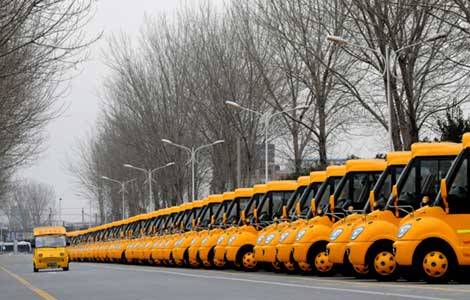 |
|
|
|
|||||||||||
BEIJING - The notoriously problematic gap between the number of boys and girls born in China has reduced for three consecutive years, the first sustained alleviation in the gender ratio in 30 years, said a report in Thursday's People's Daily newspaper.
But the figure is still higher than a warning limit and the country faces an arduous task to redress its gender imbalance, according to the flagship newspaper of the Communist Party of China.
Census data released by the National Bureau of Statistics showed that in 2011, China's gender ratio stood at 117.78 newborn boys for every 100 baby girls, a continuous decline from 119.45 in 2009 and 117.94 in 2010.
This result indicates that government measures, including crackdowns on illegal prenatal gender tests and selective abortions, are proving effective, Zhang Jian, a public communication official of the National Population and Family Planning Commission (NPFPC), told the newspaper.
A natural gender ratio at birth should be somewhere between 103 and 107 boys to every 100 girls. Due to the higher mortality rate of boys, the ratio will balance off by the time each generation reaches an age to have their own children.
However, since ultrasound inspections have enabled fetal gender testing in China in the 1980s, the country's gender ratio for newborn babies has hovered at a high level, and reached 120.56 in 2008.
Even after the decrease of the past three years, the figure is still 10 percentage points above the warning limit, which means newborn males outnumber females by 10 percent, the article said.
It is estimated that, by 2020, there will be 24 million more men than women at marriage age in China.
And the serious gender imbalance is not only a population problem, but also a grave social problem, Zhang noted.
Between August 2011 and March 2012, six governmental departments including the NPFPC and the ministries of health and public security launched special campaigns to crack down on illegal gender tests and abortions.
Also, in 2011, local authorities in east China's Jiangxi province solved 2,064 cases of such violations, revoked the licenses of 312 medical workers involved, and detained and sentenced 83 people.
Experts have also proposed enhanced efforts to promote equal opportunities and the social status of females as a fundamental solution to the problem.
The preference for boys in Chinese society became conventional in China's era of under-development, when boys were favored as stronger laborers.
The problem lingers in modern China, though. Even in some of the country's affluent coastal areas, gender ratio figures are climbing, the article noted.
Excepting improvement in education levels of girls and women, females are still left behind their male counterparts in job opportunities, career positions and salary, said Yang Juhua, a demographic professor with Renmin University of China.

|

|

|

|

|

|